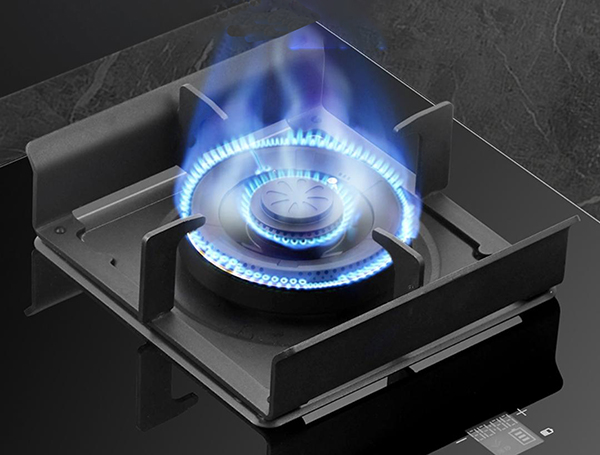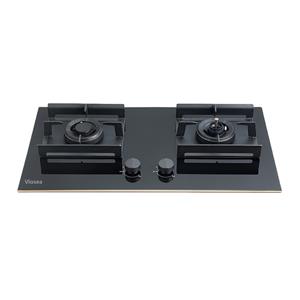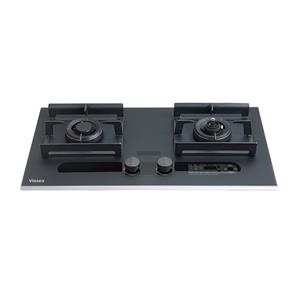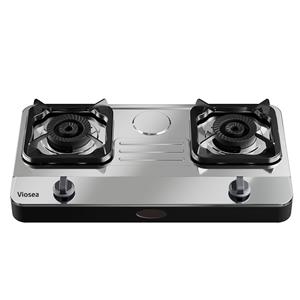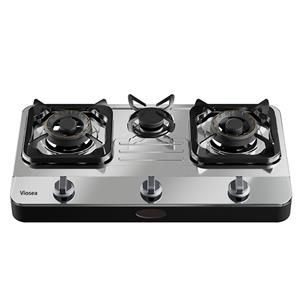Is Red Flame on Gas Stove Normal? Why Does It Occur?
The main reasons for the red flame on a gas stove are as follows:
1. Gas Composition: Moisture and Impurities
One of the primary reasons for the appearance of a red flame is the composition of the combustion gas. When the gas contains a high amount of moisture or impurities, it can alter the color of the flame. Natural gas or liquefied petroleum gas (LPG) is typically composed of hydrocarbons, which burn with a blue flame under ideal conditions. However, if the gas contains contaminants such as water vapor, sulfur compounds, or other impurities, the combustion process may be affected. These impurities can interfere with the complete oxidation of the gas, leading to the production of a red or orange flame.
In some cases, the gas supply itself may be the source of the problem. For example, if the gas has been stored improperly or if there are issues with the gas line, moisture and impurities may enter the system. This is more likely to occur in areas with high humidity or where the gas infrastructure is older and less maintained. To address this issue, it is recommended to ensure that the gas supply is clean and free from contaminants. If the problem persists, contacting the gas supplier for an inspection may be necessary.
2. Environmental Factors: Dust and Moisture
The environment in which the gas stove is used can also play a significant role in the appearance of a red flame. During cooking, the air in the kitchen can become filled with dust, moisture, and oil vapors. These particles can be drawn into the burner, where they interact with the flame. Dust and oil vapors, in particular, can act as additional fuel sources, altering the combustion process and causing the flame to take on a reddish hue.
High humidity levels in the kitchen can exacerbate this issue. When the air is saturated with moisture, it can affect the efficiency of the gas combustion process. The presence of water vapor in the air can lower the temperature of the flame, leading to incomplete combustion and the production of a red flame. To minimize the impact of environmental factors, it is advisable to maintain good ventilation in the kitchen. Using an exhaust fan or opening windows can help reduce the accumulation of dust, moisture, and oil vapors in the air.
3. Air Vent Adjustment: Ensuring Proper Combustion
Another common cause of a red flame is improper adjustment of the air vent. Gas stoves are designed to mix gas with air in specific proportions to achieve optimal combustion. The air vent, or air shutter, controls the amount of air that enters the burner. If the air vent is not adjusted correctly, the gas-to-air ratio may be imbalanced, leading to incomplete combustion.
When there is insufficient air, the gas does not burn completely, resulting in a red or yellow flame. This type of flame is less efficient and can produce more carbon monoxide, which is a safety concern. On the other hand, too much air can cause the flame to become unstable or even extinguish. To resolve this issue, the air vent should be adjusted to achieve a balanced flame. This can typically be done by turning the air shutter until the flame appears blue and steady. If you are unsure how to adjust the air vent, consult the user manual for your stove or seek assistance from a professional technician.
4. Grate Material: High-Temperature Effects
The material of the stove grate can also contribute to the appearance of a red flame. Many modern gas stoves are equipped with grates made from enamel-coated cast iron or other heat-resistant materials. While these materials are durable and effective at withstanding high temperatures, they can sometimes influence the color of the flame.
Under high heat, the enamel coating on the grate may emit a red glow. This is due to the presence of metal ions in the enamel, which can become excited at high temperatures and emit red light. Additionally, the grate itself can radiate heat, causing the surrounding flame to appear red. This phenomenon is purely optical and does not indicate any problem with the stove's performance. It is simply a result of the materials used in the construction of the grate and is not a cause for concern.
5. Additional Considerations: Safety and Maintenance
While a red flame is often harmless, it is important to ensure that your gas stove is operating safely and efficiently. Regular maintenance can help prevent issues that may lead to incomplete combustion or other problems. Here are some additional tips to keep in mind:
a) Clean the Burners: Over time, burners can become clogged with food debris, grease, or dust. This can obstruct the flow of gas and air, leading to incomplete combustion. Regularly cleaning the burners can help maintain a steady blue flame.
b) Check for Gas Leaks: A gas leak can affect the performance of your stove and pose a safety hazard. If you notice a persistent red flame or smell gas, it is important to inspect the stove for leaks. Applying a soapy water solution to the gas connections can help identify leaks, as bubbles will form at the site of a leak.
c) Inspect the Gas Supply: If you suspect that the gas supply is contaminated, contact your gas provider for an inspection. They can test the gas for impurities and ensure that it meets safety standards.
Conclusion: No Cause for Alarm
In summary, the appearance of a red flame during combustion is typically not a sign of a malfunctioning stove. Instead, it is often caused by factors such as gas composition, environmental conditions, air vent adjustment, or the materials used in the stove's construction. By understanding these factors and taking appropriate steps to address them, you can ensure that your gas stove operates safely and efficiently.
If you have tried the above solutions and the problem persists, it may be necessary to seek professional assistance. A qualified technician can inspect your stove, identify any underlying issues, and make the necessary adjustments or repairs. Finally, if you are unable to resolve the issue on your own, please do not hesitate to contact us for further support. Your safety and satisfaction are our top priorities.

